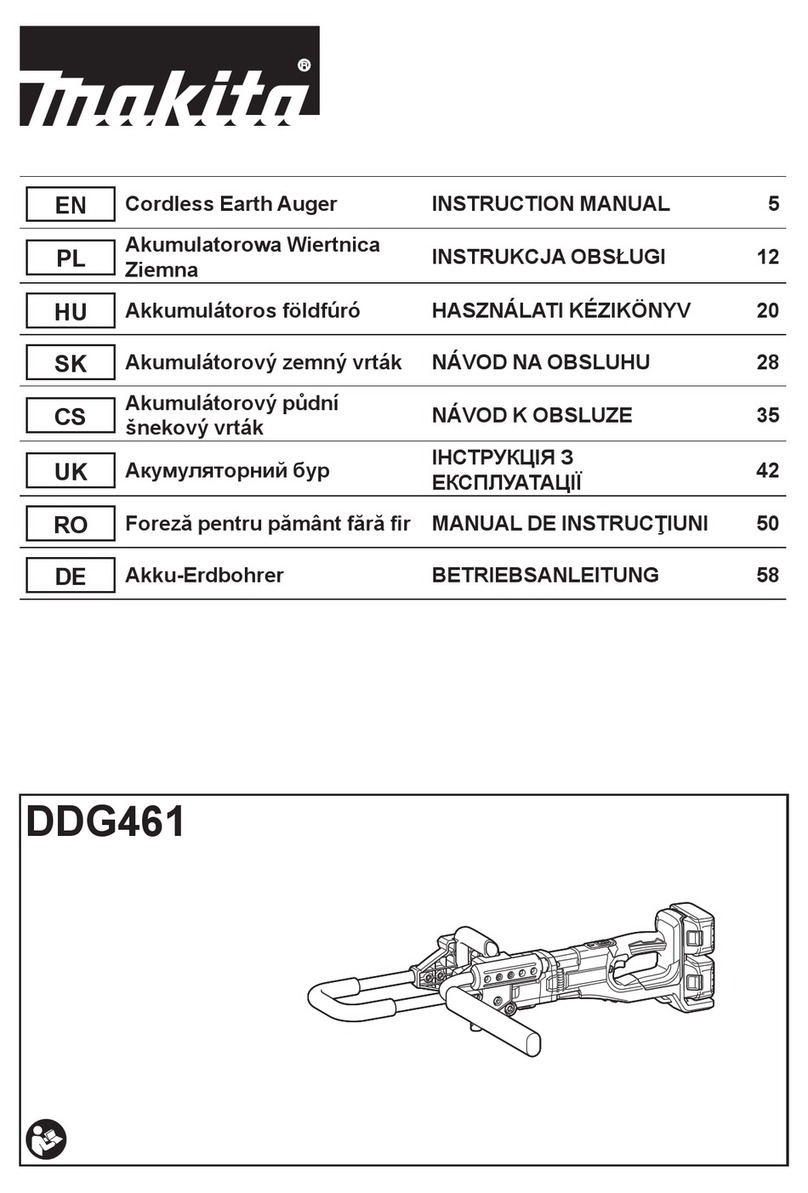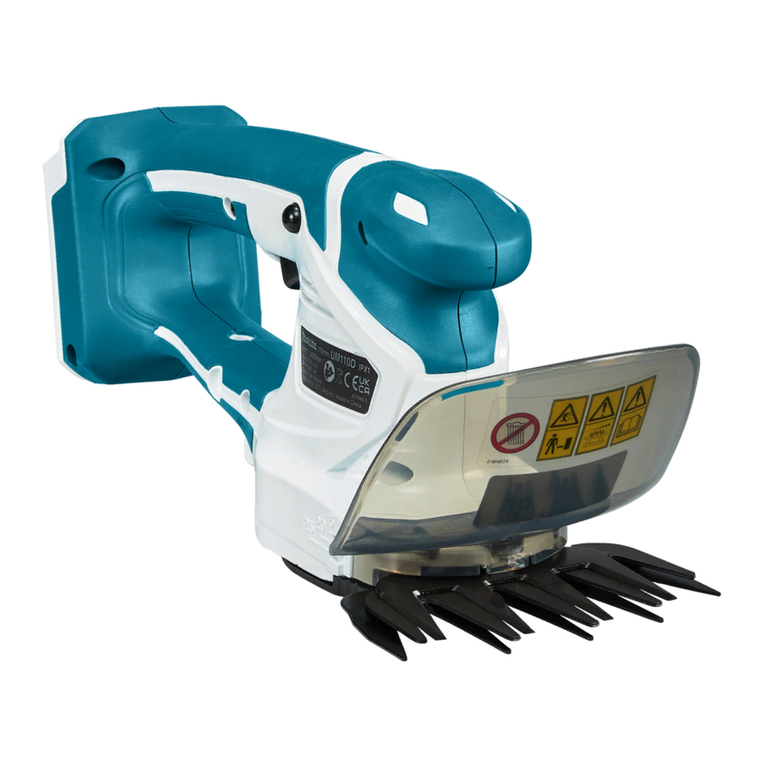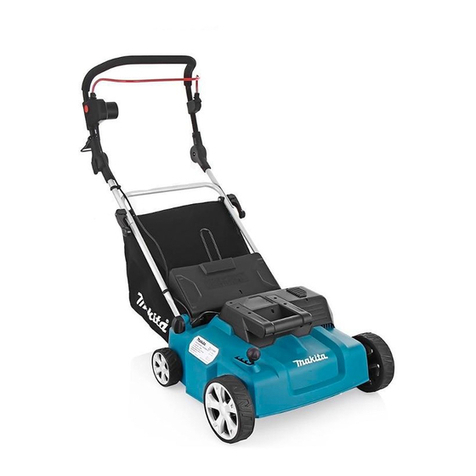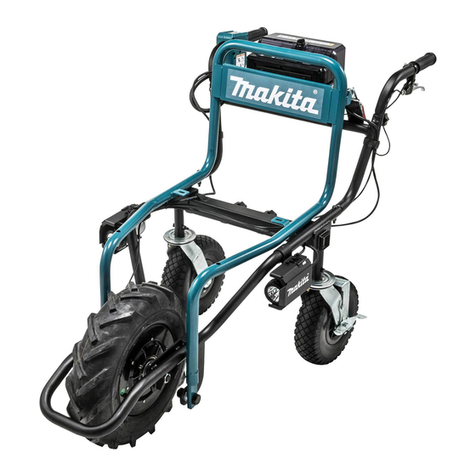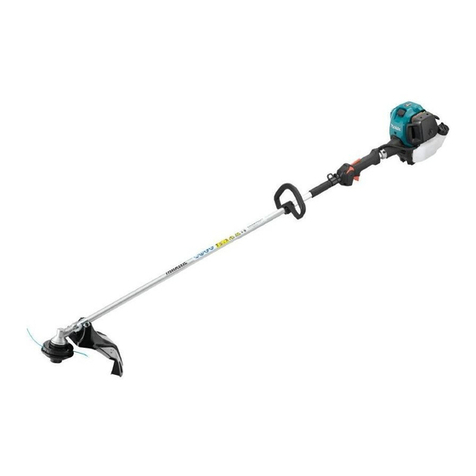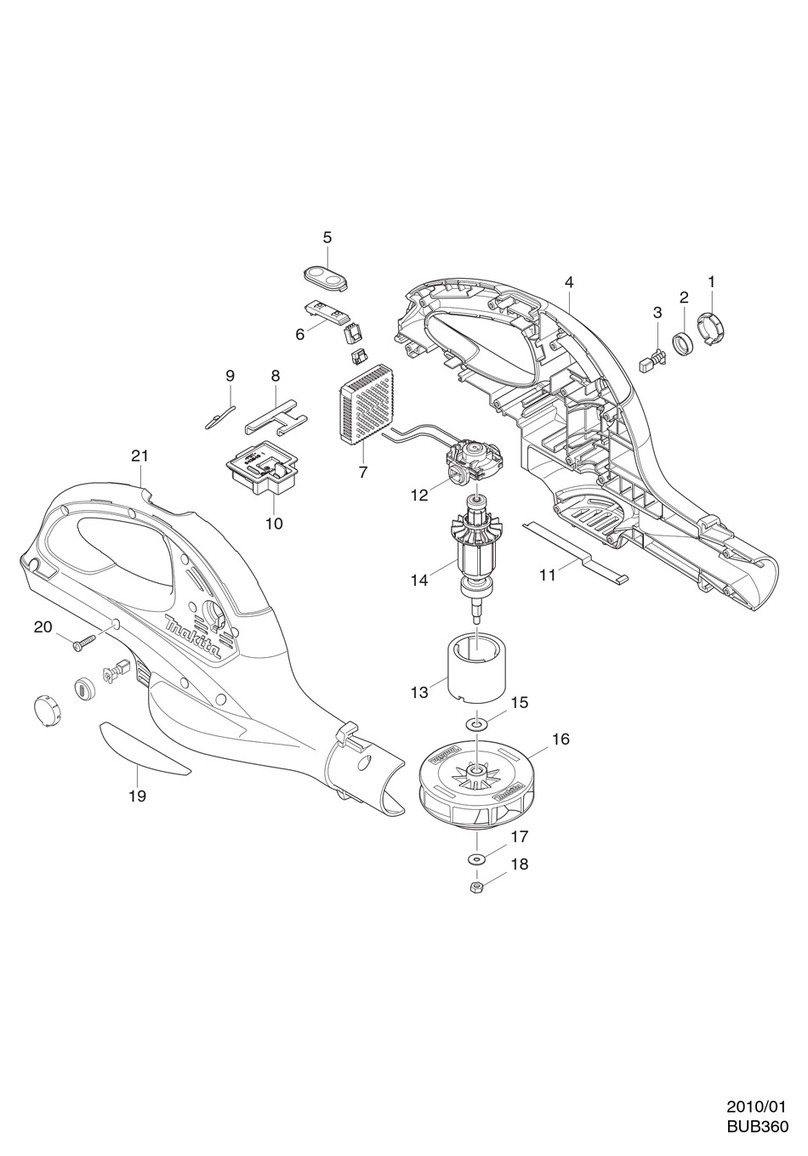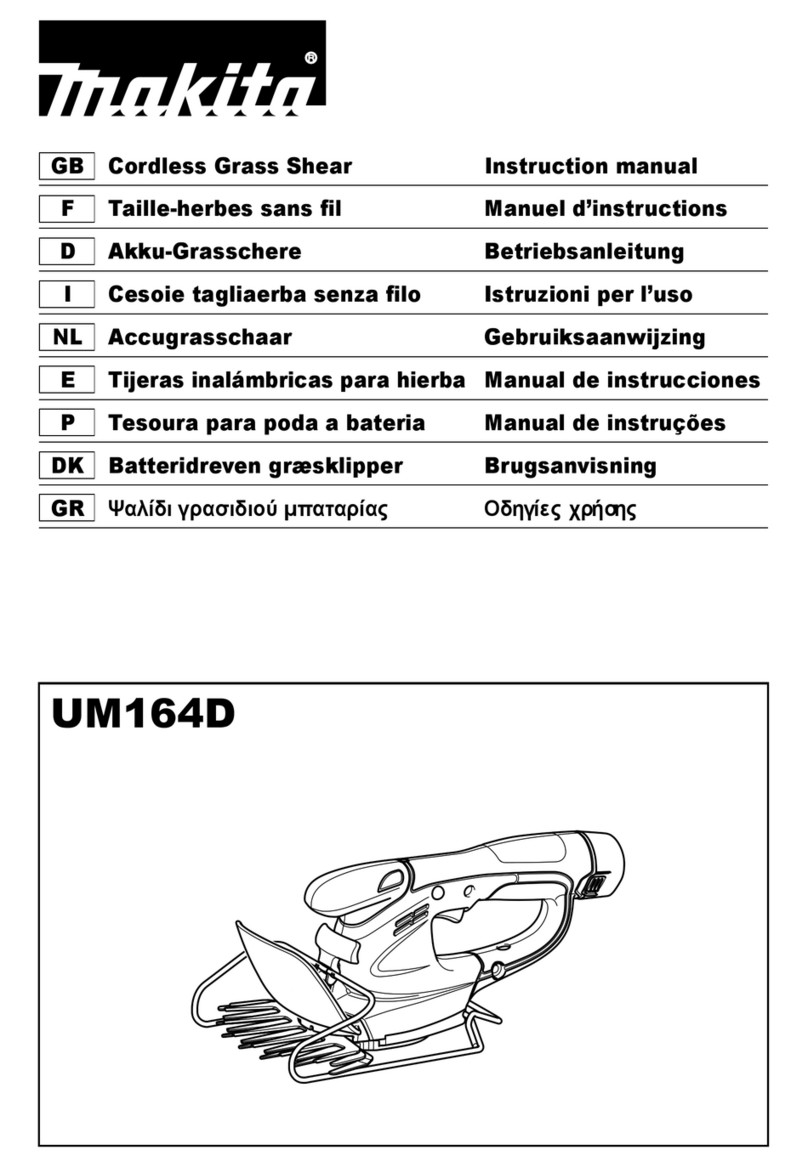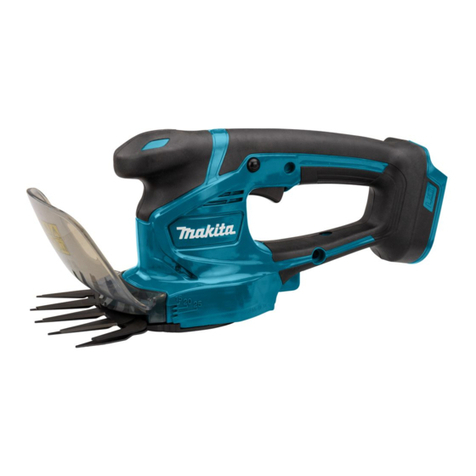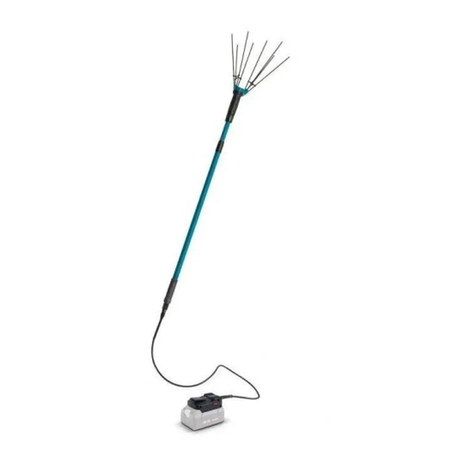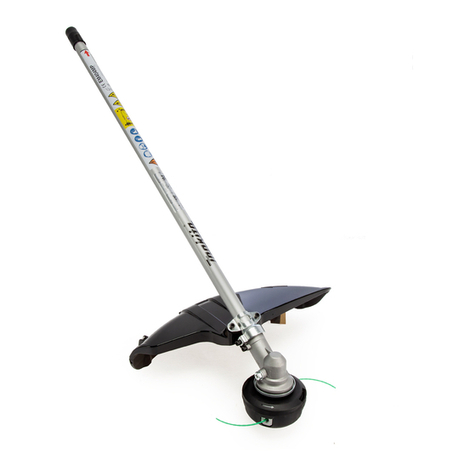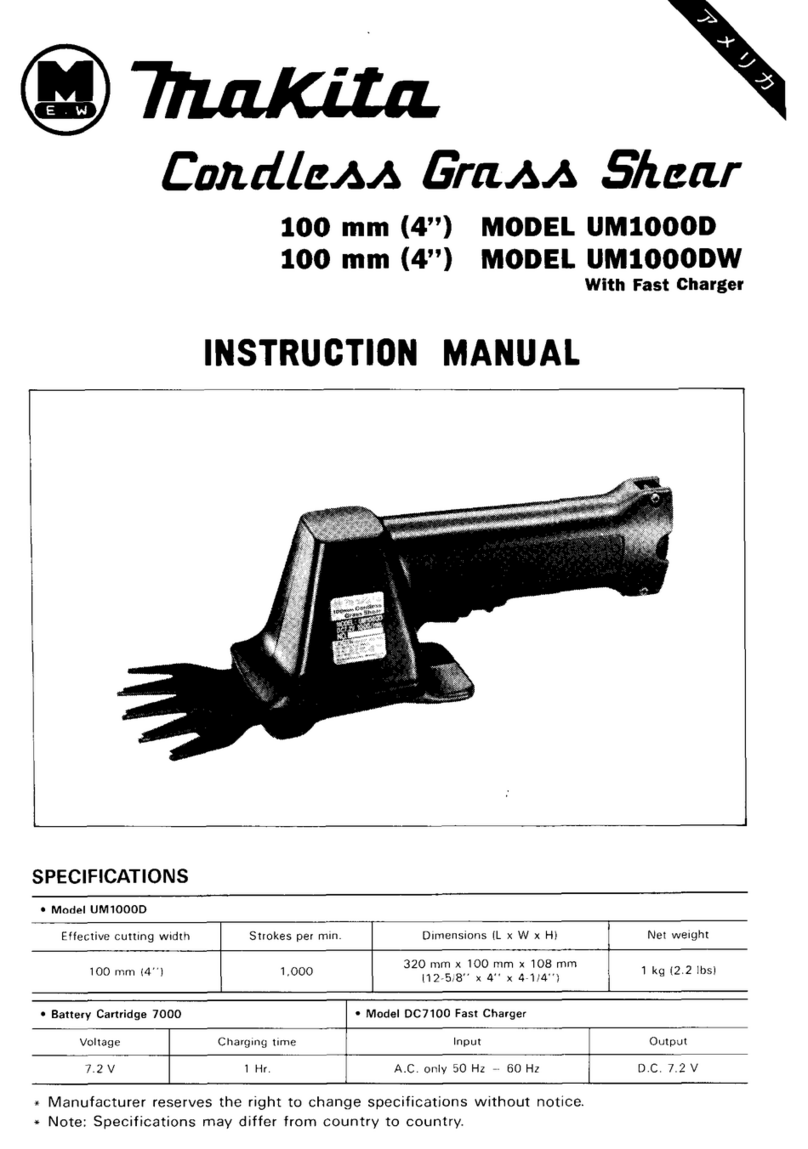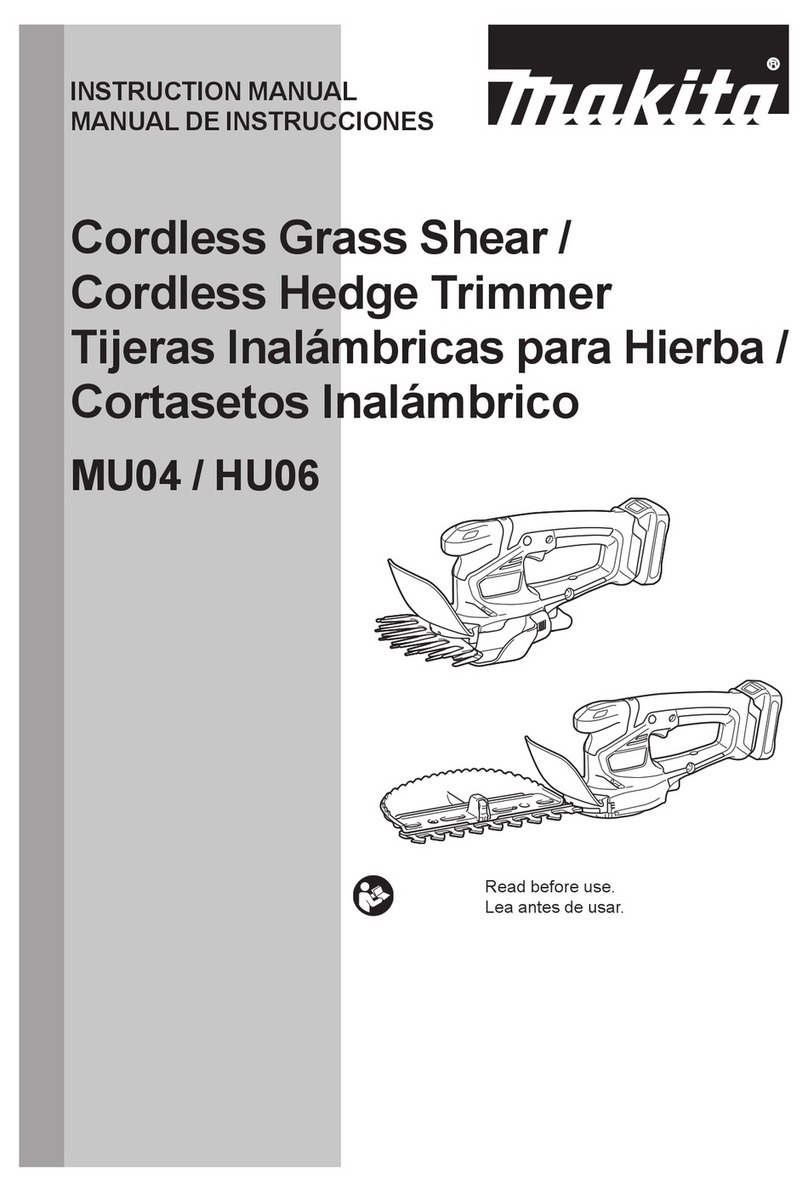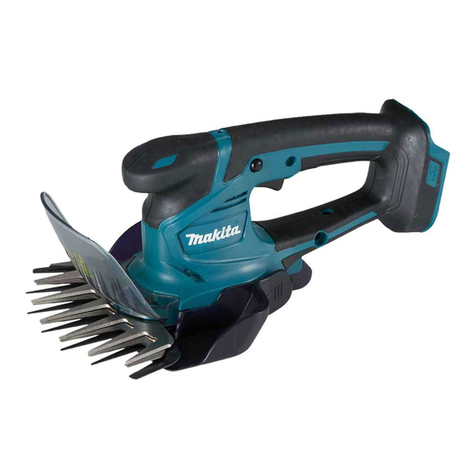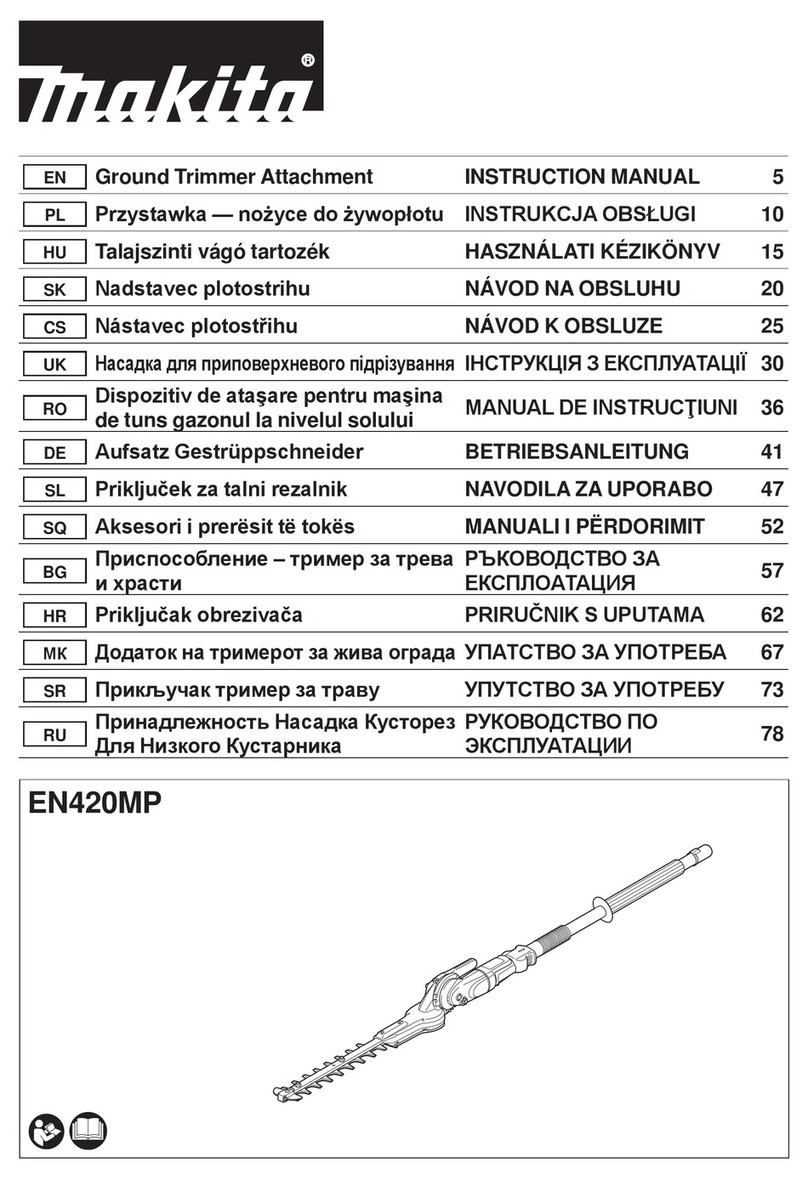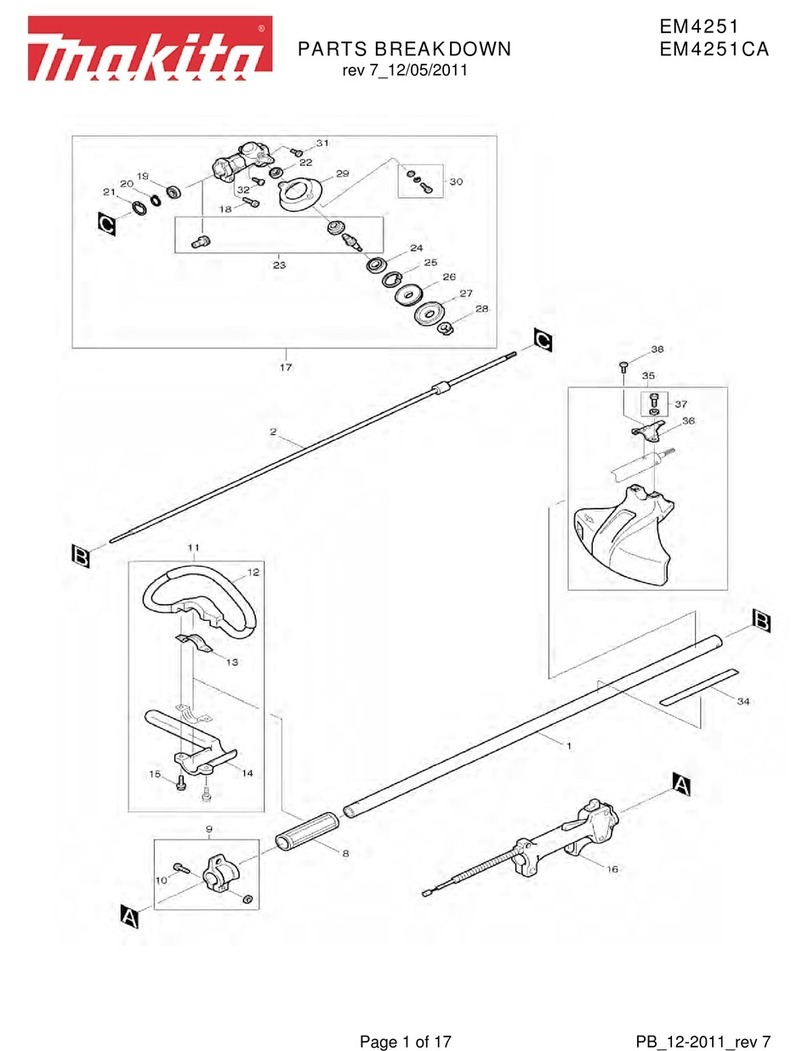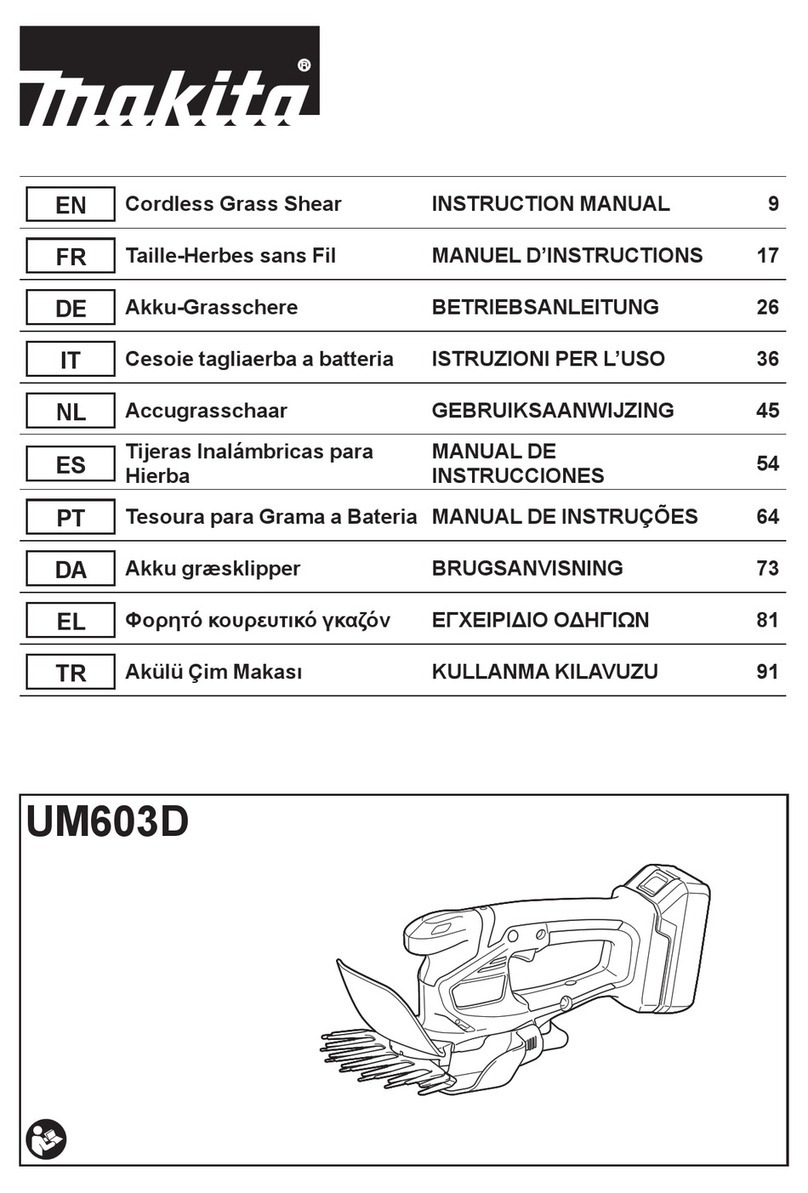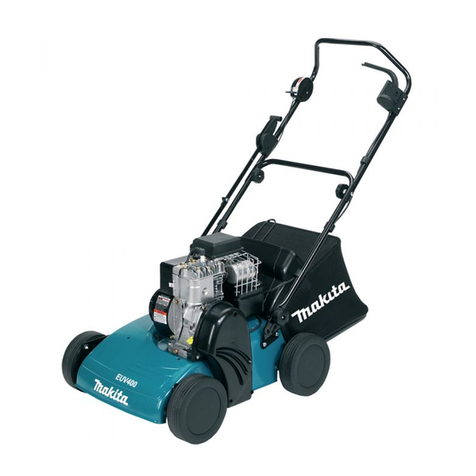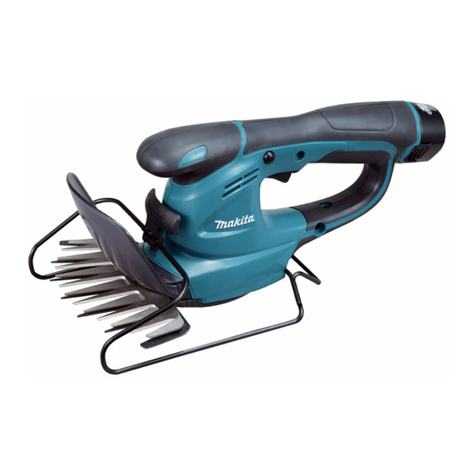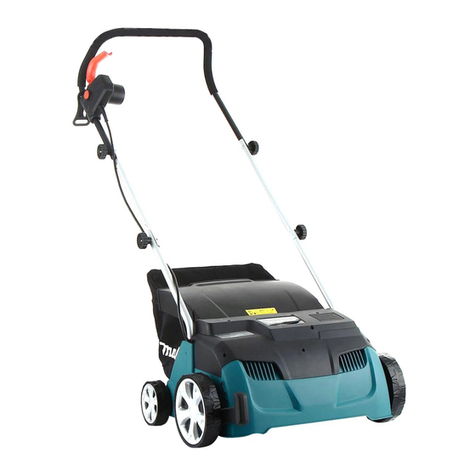
10 ENGLISH
Noise
-
ing to EN50636-2-94:
UM110D with shear blade for grass shear installed
Sound pressure level (LpA) : 70 dB(A)
-
ing to EN62841-4-2:
UM110D with shear blade for hedge trimmer
installed
Sound pressure level (LpA) : 70 dB(A)
NOTE: The declared noise emission value(s) has
been measured in accordance with a standard test
another.
NOTE: The declared noise emission value(s)
exposure.
WARNING: Wear ear protection.
WARNING: The noise emission during actual
value(s) depending on the ways in which the
tool is used especially what kind of workpiece is
processed.
WARNING: Be sure to identify safety mea-
sures to protect the operator that are based on an
estimation of exposure in the actual conditions of
use (taking account of all parts of the operating
cycle such as the times when the tool is switched
trigger time).
Vibration
The vibration total value (tri-axial vector sum) deter-
mined according to EN50636-2-94:
UM110D with shear blade for grass shear installed
Vibration emission (ah) : 2.5 m/s2or less
2
The vibration total value (tri-axial vector sum) deter-
mined according to EN62841-4-2:
UM110D with shear blade for hedge trimmer
installed
Vibration emission (ah) : 2.5 m/s2or less
2
NOTE: The declared vibration total value(s) has been
measured in accordance with a standard test method
NOTE:
WARNING: The vibration emission during
declared value(s) depending on the ways in which
the tool is used especially what kind of workpiece
is processed.
WARNING: Be sure to identify safety mea-
sures to protect the operator that are based on an
estimation of exposure in the actual conditions of
use (taking account of all parts of the operating
cycle such as the times when the tool is switched
trigger time).
EC Declaration of Conformity
For European countries only
to this instruction manual.
SAFETY WARNINGS
General power tool safety warnings
WARNING: Read all safety warnings, instruc-
with this power tool. Failure to follow all instructions
Save all warnings and instruc-
tions for future reference.
(cordless) power tool.
Cordless Grass Shear Safety
Warnings
General instructions
1. To ensure correct operation, user has to read
this instruction manual to make himself famil-
iar with the handling of the equipment. Users
-
selves as well as others due to improper handling.
2. Never allow children, persons with reduced
physical, sensory or mental capabilities or
lack of experience and knowledge or people
unfamiliar with these instructions to use the
machine, local regulations may restrict the age
of the operator.
3. Use the equipment with the utmost care and
attention.
4. Operate the equipment only if you are in good
physical condition. Perform all work calmly
and carefully. Use common sense and keep in
mind that the operator or user is responsible
for accidents or hazards occurring to other
people or their property.
5. Never operate the machine while people, espe-
cially children, or pets are nearby.
